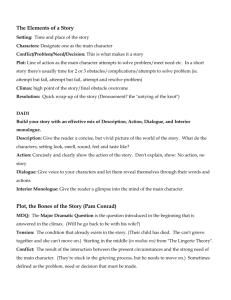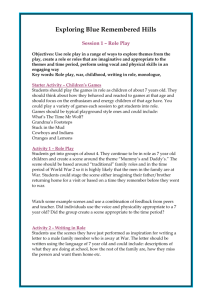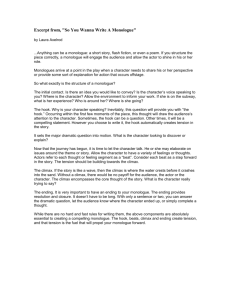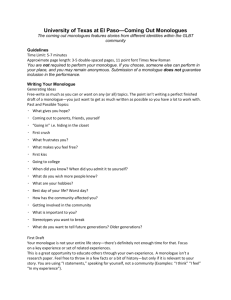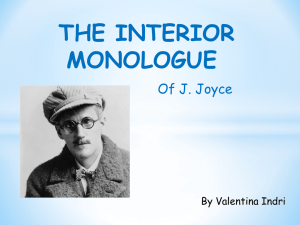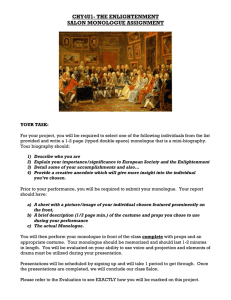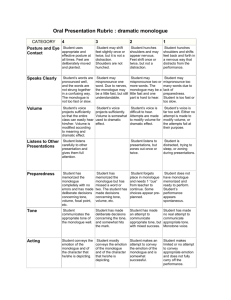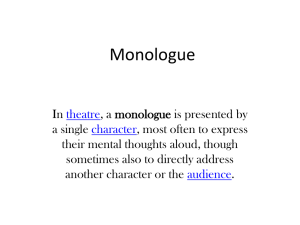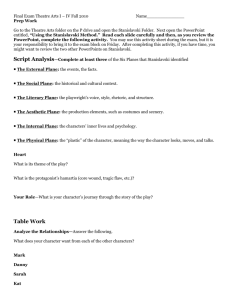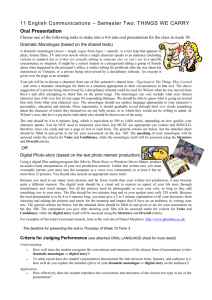Talking Heads...by Alan Bennett
advertisement
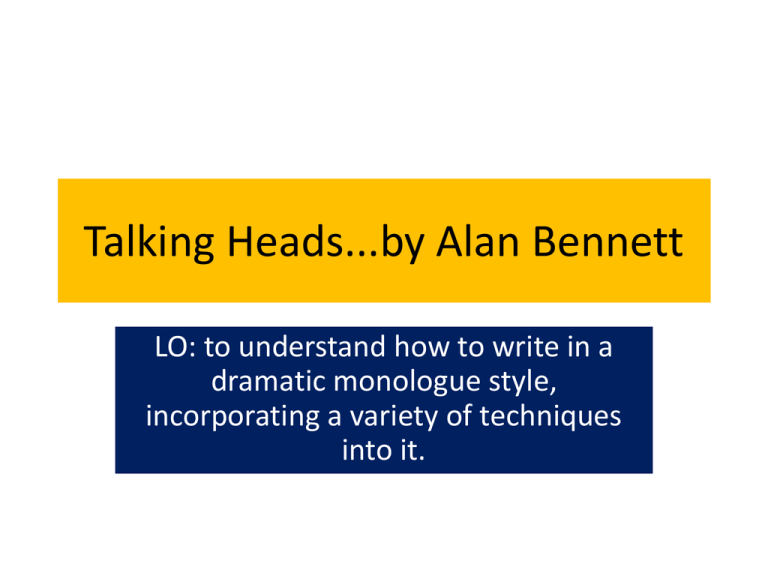
Talking Heads...by Alan Bennett LO: to understand how to write in a dramatic monologue style, incorporating a variety of techniques into it. Talking Heads... ‘A Lady with Letters...’ Tips on how to write a dramatic monologue. Instructions – 1 Read as many dramatic monologues as you can. Writers like Shakespeare, Moliere and Chekhov are classic monologue playwrights, but plenty of modern writers use the technique effectively. There are several monologue databases on the Internet you can tap into (see Resources for links). – 2 Know your characters. Anyone of them can give a monologue but it's easiest to start with your protagonist because you know him best. Do extensive character development on him so you know how he thinks and what motivates him to act as he does. – 3 Decide on the climax of your dramatic monologue. It should build up to a defining moment in the play or thrust a major theme into the limelight. – 4 Map out the structure of your monologue. It's tricky finding the right place to begin. You don't want to waste time but you don't want to ruin the suspense to the climax. – 5 Define how you'll end the monologue. You must be careful not to drag out the ending because by the time you've gotten through the climax, the audience will be anxious to move on to the next scene. – 6 Write the rough draft of your monologue. Include as much of the buildup to the climax as you like at this point. You can also drag out the ending to make the point clear to yourself. – 7 Edit your dramatic monologue as many times as necessary to get the timing right. This is when you must shorten the beginning to get at the climax in the quickest way possible and cut the ending so it leads into the next scene. • Word association • Story- ball of wool • • • • • • • • • • • • • • • • • Ideas Inspiration: Have the students use any of the following "idea jump starters" as a way into the work. Students should write a monologue in their journals based on any one of these. (15 min.) remember your first romance you thought you'd never get over look through old photo's, diaries, toys, letters - anything to trigger a memory stream of consciousness, timed writing write to a specific theme, i.e.; guilt, pride, obsession, fear, etc. think of a specific location, or time period Tell a story to someone in 10 minutes. Then tell write to music in 5 minutes. Clarity is important. Don't bore write without editing yourself - firstitthoughts us with or God back story. change your point of view - perspective of aunnecessary dog, a bird, details a teapot, Descriptive and specific images imagine life through the eyes of a real person, in a fictional event are one of the main things which capture an audience's telephone conversation imagination. Your feelings about the thing a reporter on the scene described is also very important. (15 min.) a speech - or preparing to give a speech stand up comedy routine imagine the "real" story behind a news article, or tabloid headline turn at random to a page in the dictionary, point to a word and use it as your first word in the monologue write about a painful memory - these often have emotional triggers Where is this taking place? Who is in the clown suit? What did he/she do? What is he/she thinking? What is the police officer thinking? What is the child thinking/feeling who is perhaps watching the event? Now, read it aloud! Why is the nun so happy at the computer? What is she doing? How long has she been a nun? How does she feel about her calling? What is her dream in life? Who was she before she became a nun? How will they explain this mistake to the foreman? What happens next? How is this both funny and sad at the same time?
